
Ming Longquan Imperial wares
The Ming official records, Da Ming Huidian (大明会典) recorded instances of the Palace ordering Raozhou (饶州) ie Jingdezhen and Chuzhou (处州) to produce porcelain wares for use by Palace and for ritual and overseas tribute purposes. The kiln site was finally discovered in Dayao Feng DongYan (大窑枫洞岩) and officially excavated in 2006.

Feng Dongyan kiln site
According to Da Ming Huidian, the vessels made for the palace were based on form and design specified by the Palace. The excavation confirmed that the vessel forms and designs were similar to those Imperial Ming blue and white wares made at Jingdezhen during the Hongwu and Yongle period. The potting and the quality of the carving of motif on the pieces are excellent. They have a whiter and finer paste and high fired. It has a more light greyish green and the multi-layered glaze more transparent. As there was clear official involvement in the production process, the kiln at Feng Dongyan is confirmed to be the site that produced Ming Longquan Guan wares. Based on the Ming records, by beginning of Chenghua period, Longquan no longer produced imperial wares for the palace.
Below are photos showing comparison of the shape and motif of some of the vessels made at Longquan and Jingdezhen. The Imperial ware connection is apparent.






Some Ming Guan Longquan wares could be found in Middle East collections such as Topkapi and probably made their way overseas as tribute wares. The number were relatively few in number. In Indonesia, some similar vessels could be found in Trowulan, the capital of the Majapahit Empire. Below are two examples of vases excavated from Trowulan. The intricate carvings, fine glaze quality and potting are comparable to the above illustrated imperial kiln examples.
 |
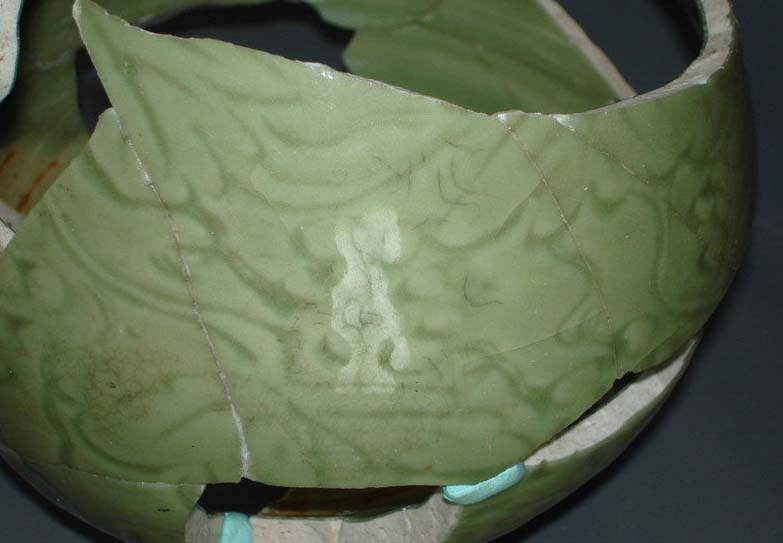 |
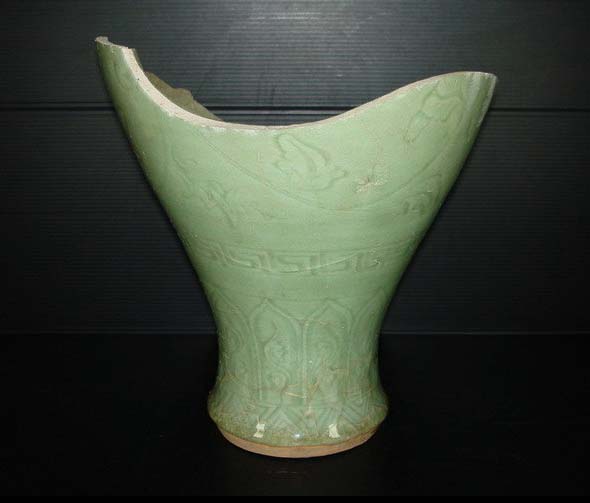 |
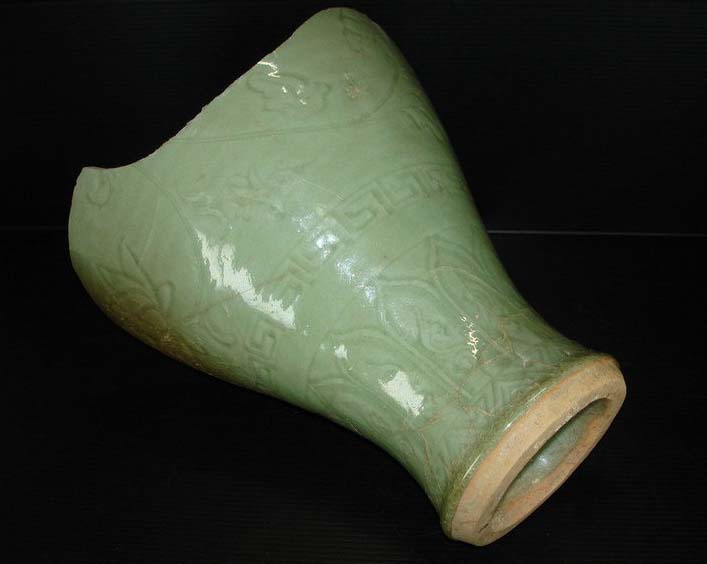 |
Ming Longquan non-Imperial wares
From the Turiang and Longquan shipwrecks dated to the Hongwu/Yongle period, those big plates with impressed central motif on the interior base and indent vertical strips, appeared to be the main types being exported.
|
Ming example with carved instead of the impressed central floral motif |
|
During the Hongwu/Yongle period, those with carved flowers/floral scrolls such as the below plate did not appear to constitute a significant part of the overseas cargo of big Longquan plates. However, by the time of the Lena wreck dated to Ming Hongzhi period, they appeared to be the dominant type exported. It is likely that such types were mainly produced during the Mid to Late 15th century. There were few plates with the impressed central floral motif and vertical strips on inner wall.
For those with elaborate decoration, both the inner and outer surface of the plates/bowls are decorated with carved floral motif. In fact, the carved floral scrolls are very similar to those found on the Ming blue and white plates/bowls of the period.
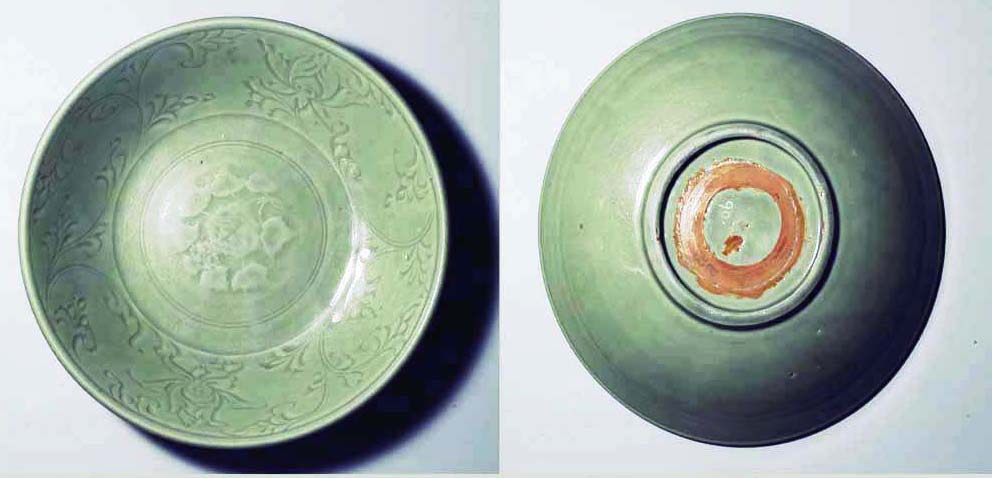
Mid Ming celadon plate with carved and impressed floral motif. Similar examples were found in Lena Cargo
Besides the distinctive carved floral motif, Ming Longquan shared some other common features. They are typical more thickly potted, heavy and high fired as compared with those of the Yuan period. When strikes with the finger, many pieces have a high ring tone. As for the glaze, many are light grayish green or grass green in colour tone. The foot of the bowls are usually thicker than those dated to Yuan period.
|
|
|
|
Two 15th Century Ming bowls, let one with carved and the other impressed floral motif |
| Some of the bowls and plates are impressed with surname of the kiln operators. The plate on the left has the impressed Gu Shi (顾氏) and the other Gu mark. A similar plate to that on the left was found in the Lena Cargo. Gu shi Cheng (顾仕成) was a famous kiln operator from Dayao during the Mid Ming period. Those with the Gu mark may be related to products produced in kilns operated by his family. | |
 |
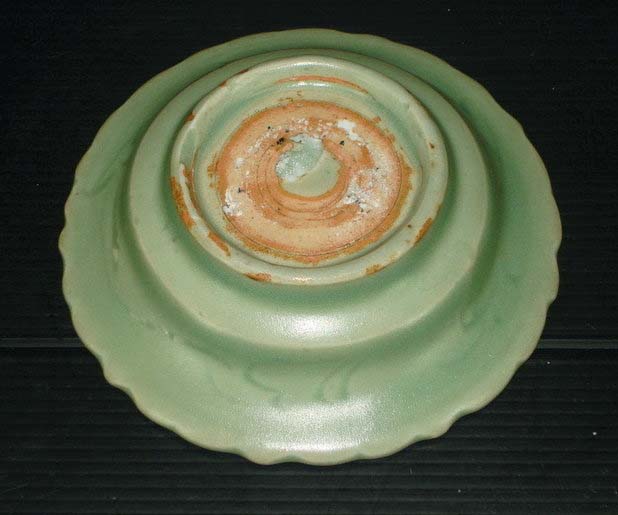 |
|
Such dish with floral shaped rim was a product popular during the Mid Ming period |
|
|
|
| A new type of bowl with slender chrysanthemum-like petals also made its appearance during the Mid Ming period. Similar bowls were recovered from the Lena cargo. |
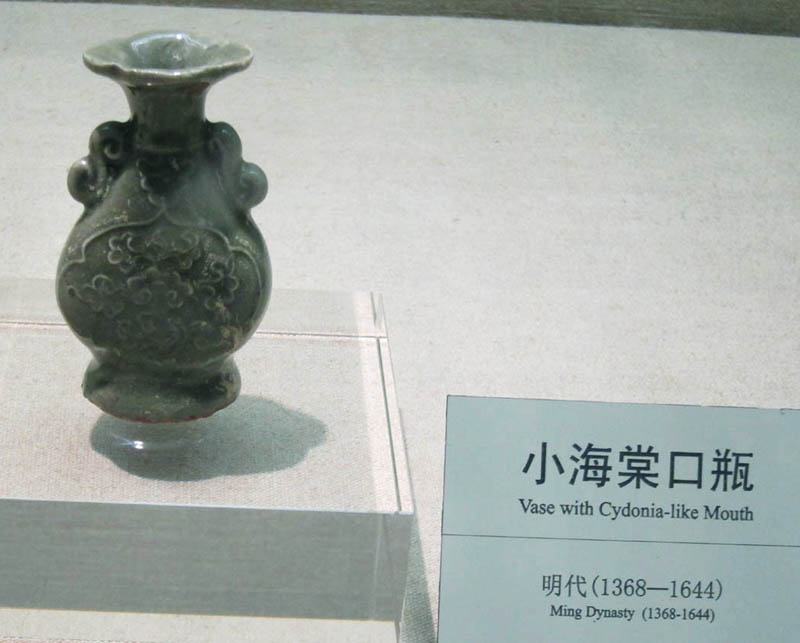
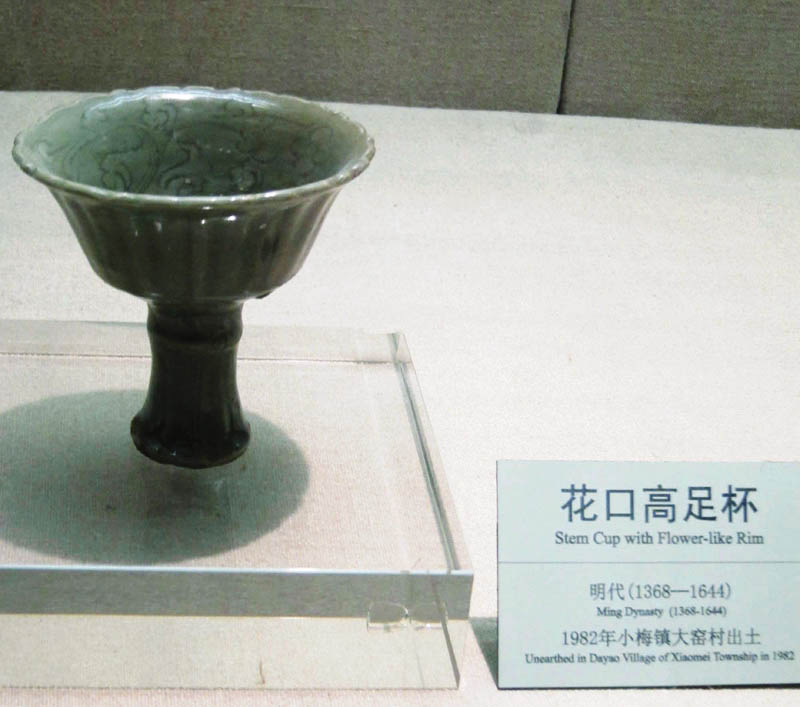
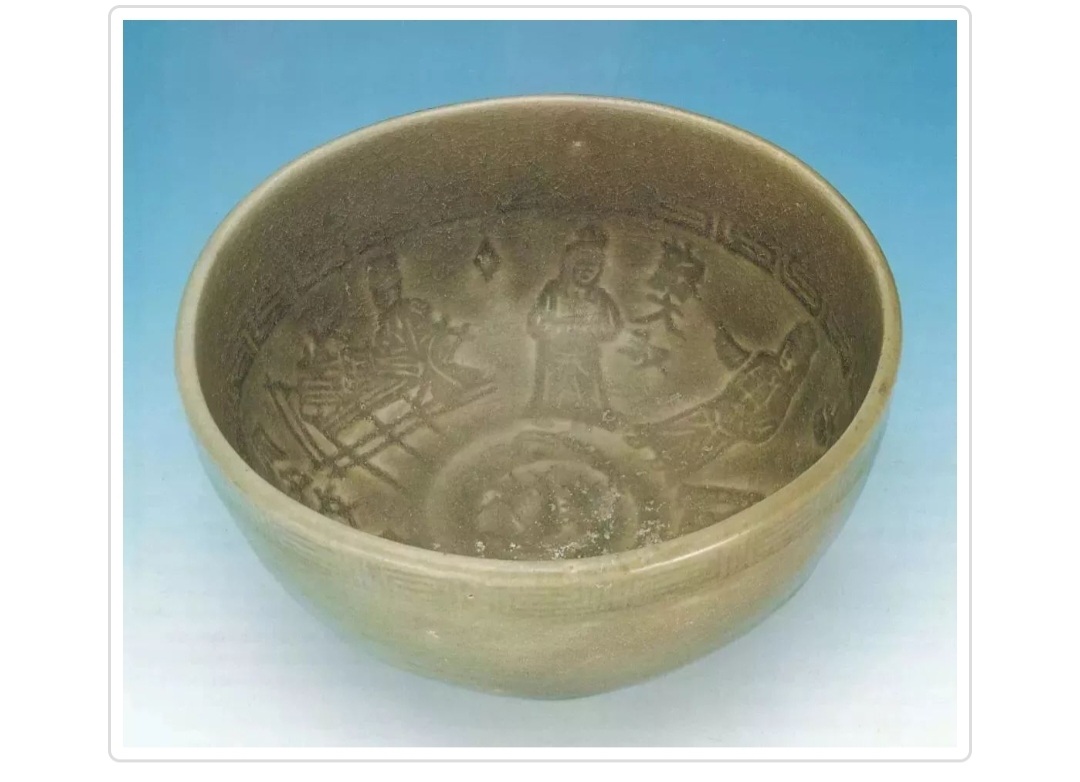 |
| Mid Ming Longquan bowl with impressed decoration depicting scenes telling the story of Su Qin, an influential Warring States political strategist |
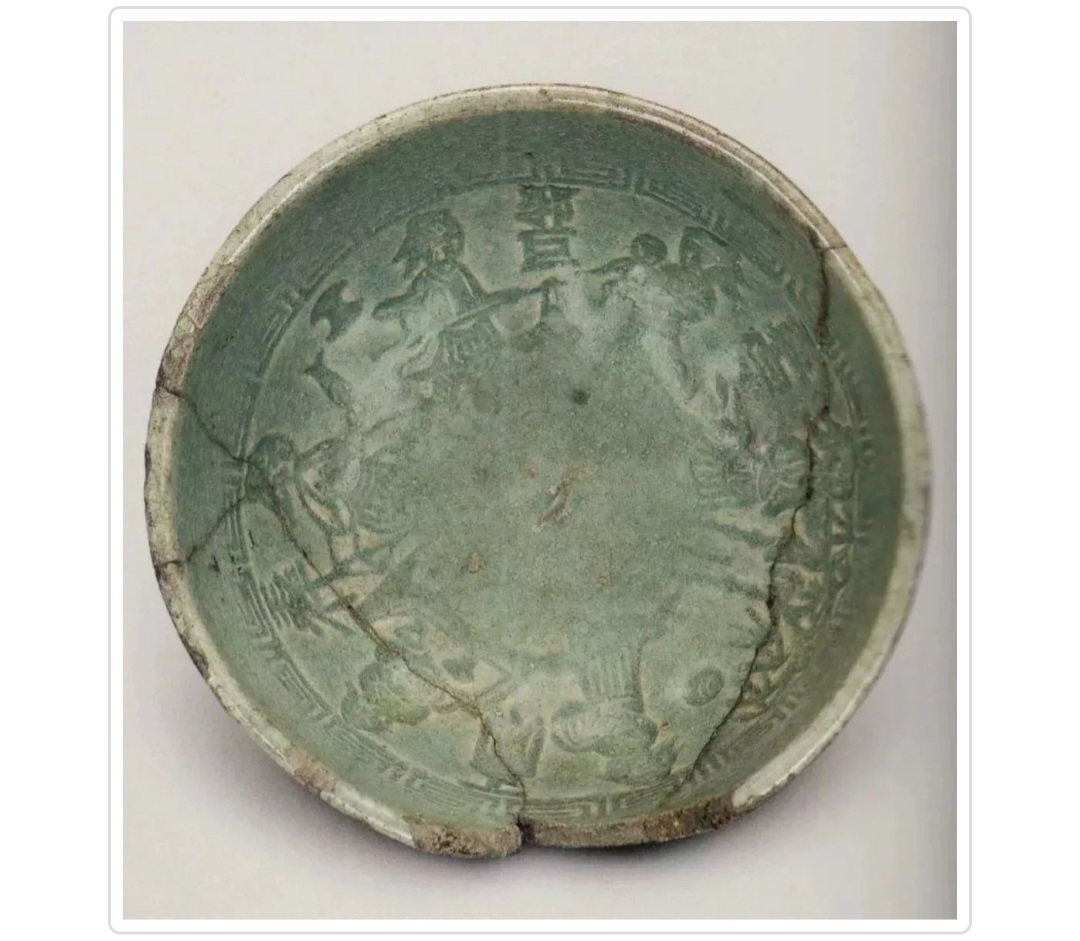 |
| Mid Ming Longquan bowl with impressed decoration taken from the The Twenty-four Filial Exemplars. |
By late Ming Jiajing period, Longquan wares were seldom found in the overseas markets. Blue and white wares from Jingdezhen became the dominant products. A survey of the kilns in Longquan also showed that by Mid Ming period, the number of kilns in operation were small in number (less than 20% the number during Yuan period). Ban on oversea trade (except through official tributary channel) imposed during the Hongwu period essentially cut off overseas demand and many kilns were forced to close down. After the lifting of ban on overseas trade during the Ming Longqing period, Longquan wares failed to recapture the overseas market. Production scale further dwindled and the quality of the products deteriorated further.
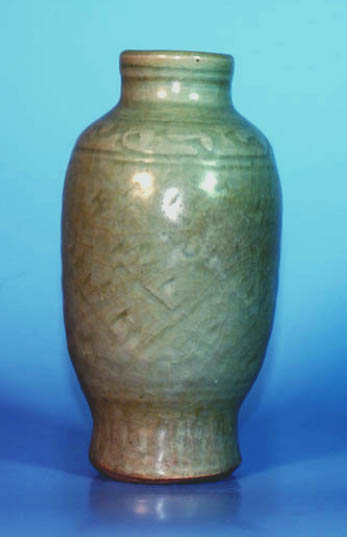 |
| 16th Century Ming vase. The carved diaper decoration is distinctive of this period |
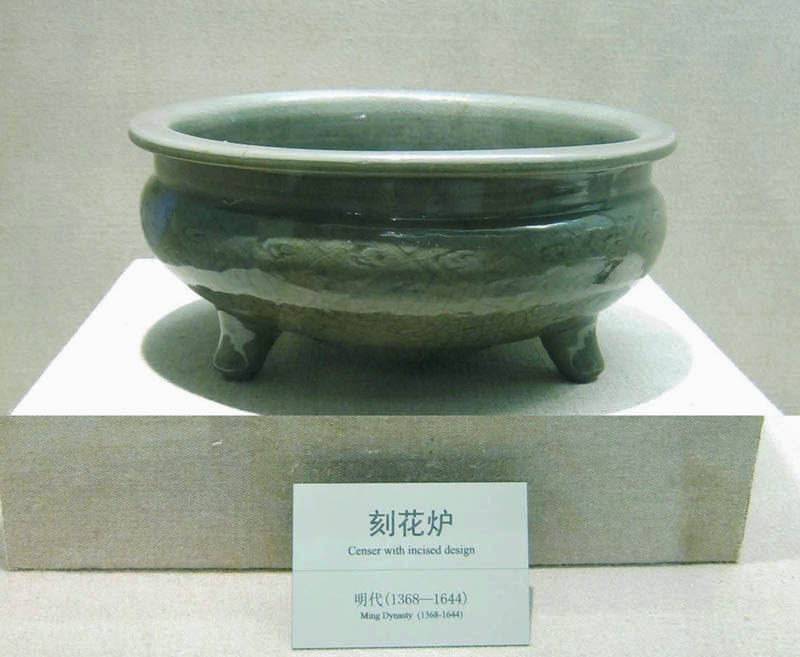
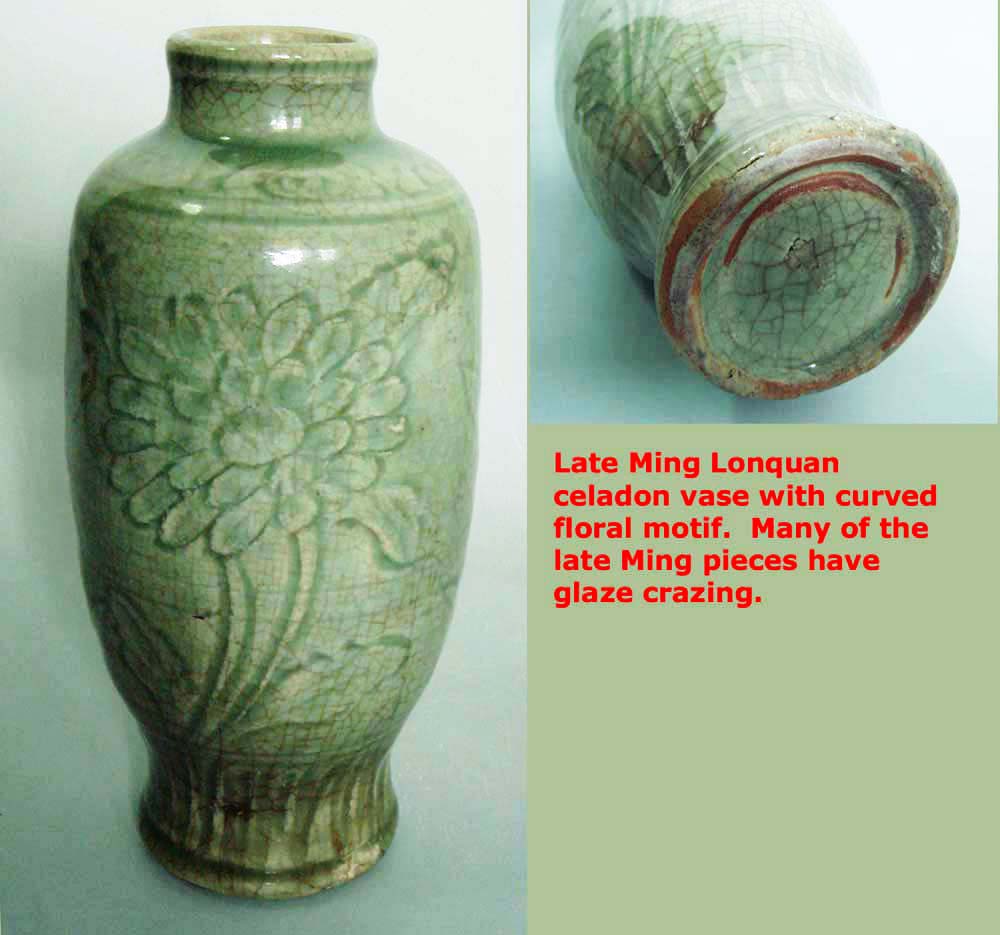
| A 15/16th Century Ming incense burner |
Qing Longquan wares
During the Qing period, , there was still some small scale Longquan celadon production. One of the Qing kilns discovered was located at Longquan Sun keng (孙坑). The glaze is thin and yellowish and usually decorated with carved motif. In the past, before the discovery of the Sun Keng kiln, such products were termed Zha Pu Longquan (乍浦龙泉) by the Chinese antique dealers. They were produced for domestic consumption. They bear little resemblance to the Longquan wares of the past.
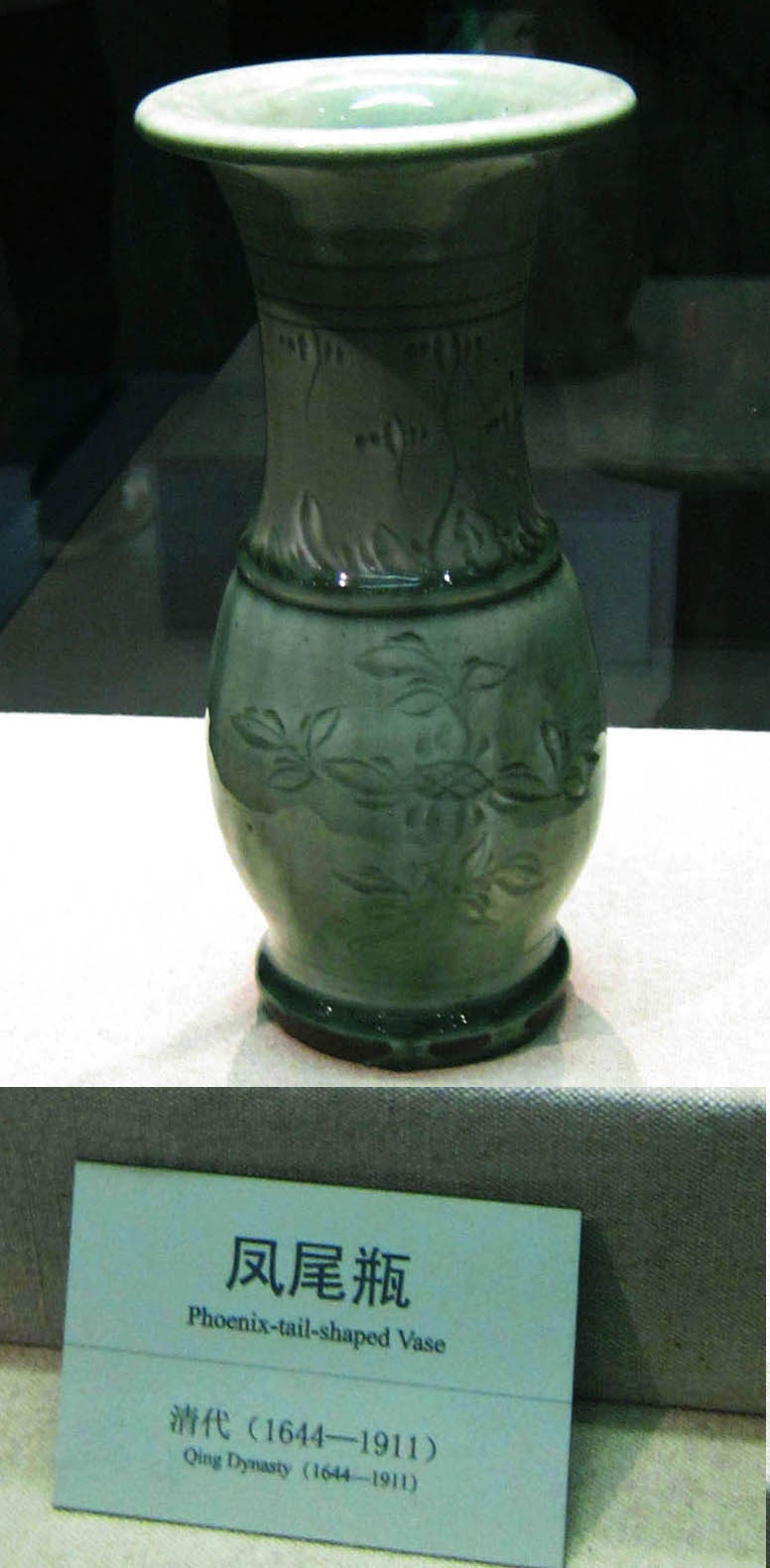
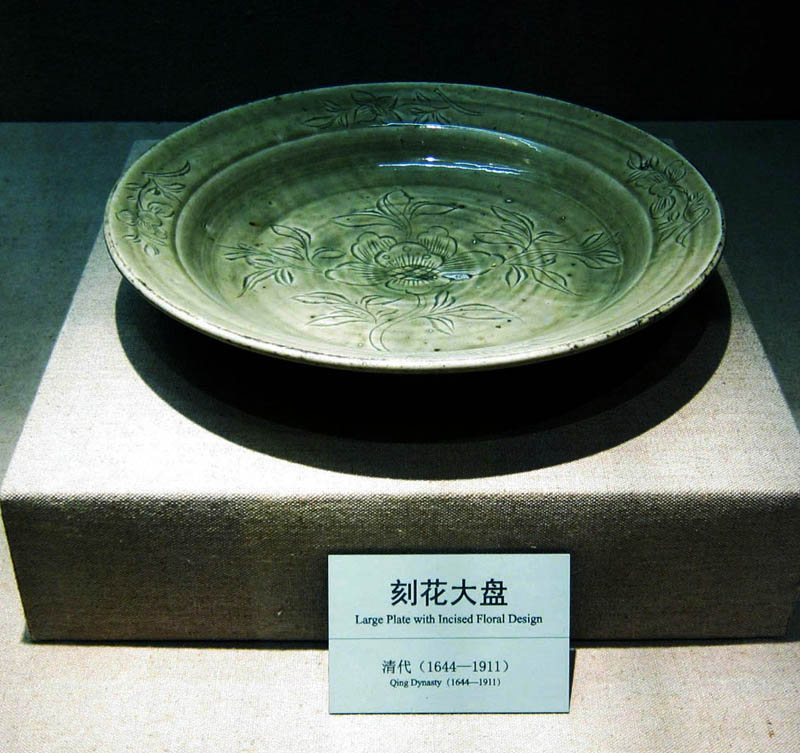
Republican Longquan wares
During the Republican period, potters from Longquan started to experiment and reproduce wares with glaze similar to those from the Song/Yuan period. They were intended as copies to deceive the undiscerning collectors both local and overseas. Basically the Longquan potters have now mastered the glaze composition and firing method of the past. The appearance of high end copies of Song/Yuan Longquan wares are very close to the original.
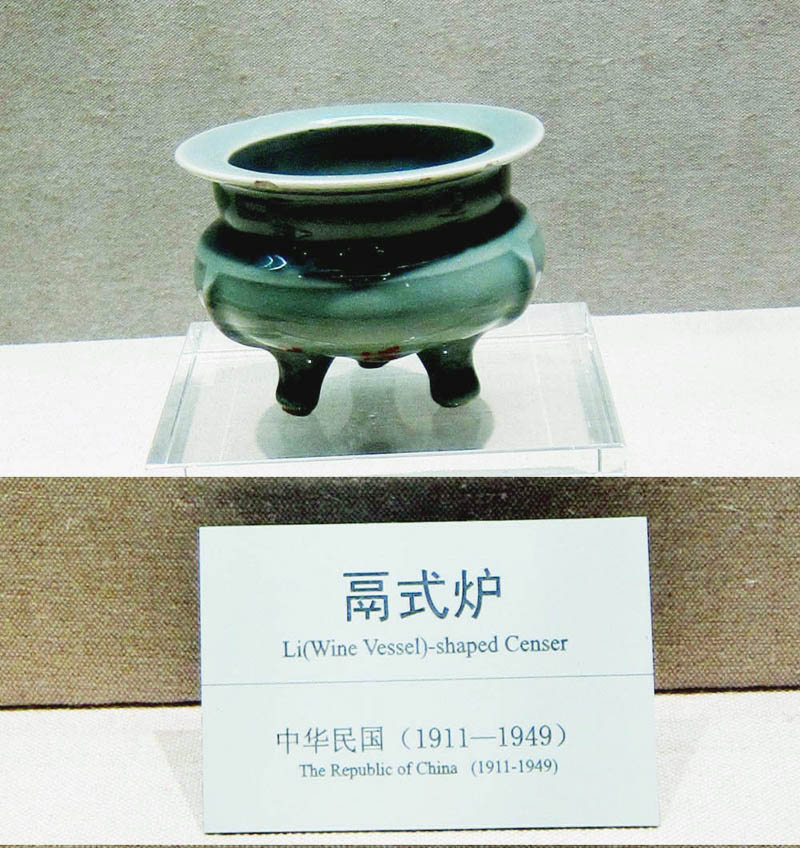
Written by: NK Koh (3 Mar 2008).
re-written on: 12 Jan 2012 ,
Return to: Page 1, Page 2, Page 3 , Home
References:
1. Chronology of Longquan Wares of the Song and Yuan Period by Kamei Meitoku. Article published in the book "New Light on Chinese Yue and Longquan wares" edited by Chumei Ho.
2. 龙泉窑研究- 中国古陶瓷学会 (故宫出版社)